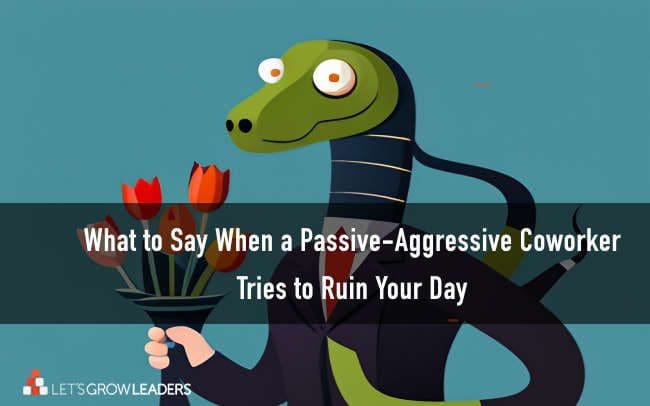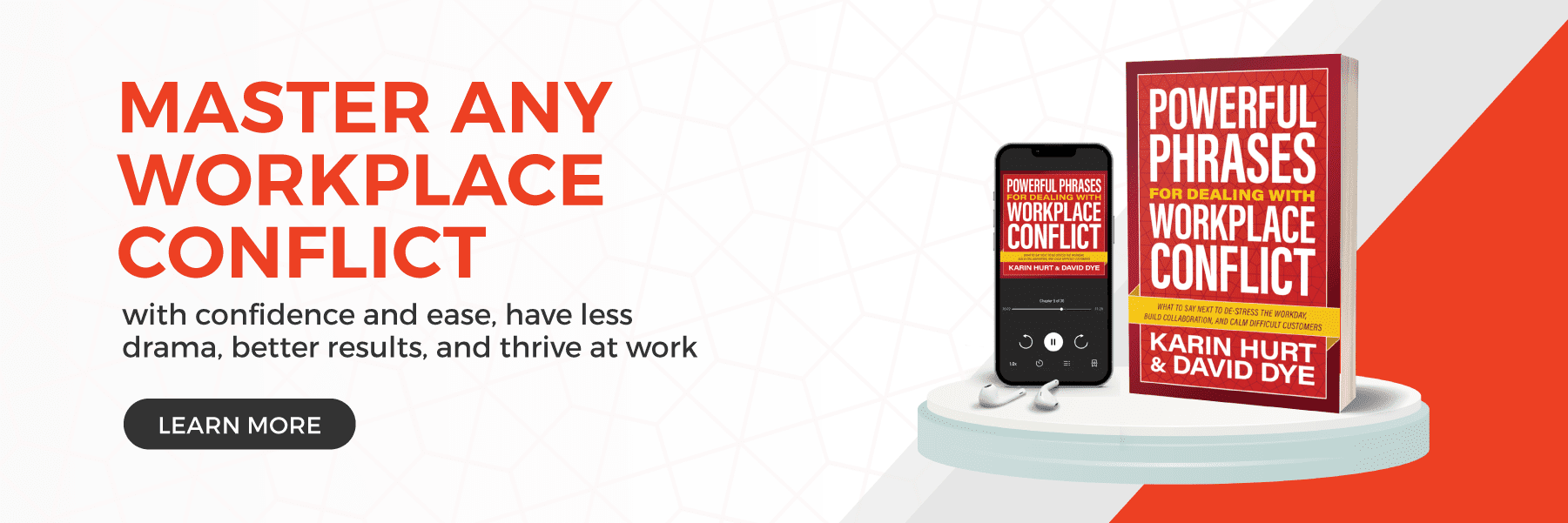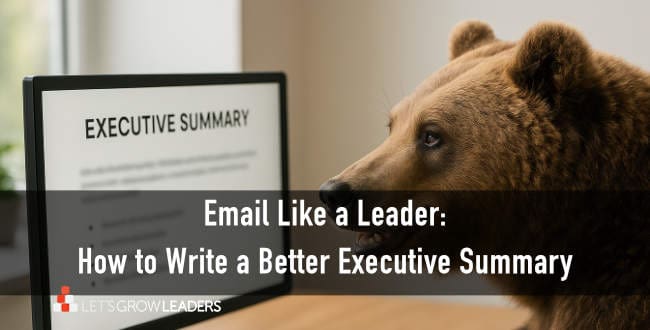What to Say When a Passive-Aggressive Coworker
Tries to Ruin Your Day
Passive-aggressive behavior is contagious. It’s easy to let yourself react with frustration or even get passive-aggressive (or maybe aggressive-aggressive) yourself. Now you look like the jerk—not good. The best way to deal with a passive-aggressive coworker is not to get caught in their game. Staying calm, as this respondent in our World Workplace Conflict and Collaboration survey suggests, can make all the difference and reduce the likelihood of passive-aggressive behavior in the future.
What Are Examples of Passive-Aggressive Behaviors?
Let’s start with what we mean by passive-aggressive coworker behavior. The aggressive part is that the person is feeling anger or hostility. The passive part is that they don’t express it directly. Rather, it’s hidden in underhanded ways of power, control, or deception.
For example, a passive-aggressive comment about being passive-aggressive might look like this: “Oh, they always seem to find a way to avoid taking responsibility for their actions. It must be nice to live in a world where you’re never wrong.”
Typical passive-aggressive coworker behaviors include things like:
- Snarky comments
- Bitter, critical, or demeaning humor
- Withholding information
- Backhanded compliments
- Sabotaging your success by failing to meet a commitment
Please, Don’t Say This to Your Passive-aggressive Coworker.
Before we get to the phrases, let’s get one “do not” out of the way: Do not tell someone they’re being passive-aggressive.
It doesn’t work. They’ll get defensive or accuse you of the same thing. After all, how dare you label me? Instead, get some space, stay calm, and use these phrases.
Powerful Phrases for Working with a Passive-Aggressive Coworker
“Is this a pattern?”
This first Powerful Phrase is just for you to ask yourself. All of us have moments where we’re frustrated, don’t know how to express our concerns, or are clumsy. If the specific situation is new and doesn’t have a major implication, it’s worth having some patience and seeing if there is a pattern of passive-aggressive behavior.
“Is this a big deal?”
However, if the passive-aggressive coworker withheld information and made you look bad in front of the executive team, or this is the third time it happened, you’ll do well to address the behavior.
Powerful Phrases to Raise Your Concern
“I noticed that…”
One of the most powerful ways to address passive-aggressive coworker behavior is to describe what happened – calmly. Staying calm avoids playing into their game. Here are three examples:
“I noticed during the meeting you said that ‘It must be nice to be the favorite.’”
“I noticed that in your presentation you included the data that showed your team’s results in one category, but did not include the other three.”
“I’ve noticed that you always cc: my manager on all your emails to me and am curious about what’s happening there?”
For someone who doesn’t have deeply ingrained passive-aggressive behaviors, shining a light on what happened is often all it takes to put a stop to it. You’ll know this person because they say something like “Yeah, you’re right. I was having a bad day” or “Hmm, good point. I don’t need to do that.”
Powerful Phrases to Help Them Feel Heard
“What I hear you saying is…”
When a coworker says something snarky, uses critical humor, or some other passive-aggressive statement, it’s usually because they’re upset or frustrated. Once again, don’t respond to how they said it or even, necessarily to what they said, but to what their words represent.
“What I hear you saying is that you feel like I’m getting more opportunities than I deserve. Is that right?”
If you can say this calmly, and without judgment, you might start a meaningful, authentic conversation about what they’re thinking and feeling. For example, they might agree. “Yeah, I have been frustrated. It seems like everything goes your way.” Or they might disagree, “No, you definitely deserve the opportunities. I’m just frustrated that I’m not getting them too.”
You’ve just unlocked the hidden emotion that they didn’t know how to express—and helped them express it. From there, you might continue with a reflect-to-connect statement. Something like, “Yeah, it can be frustrating when everyone else seems to get the opportunities you want.”
“How can I help?”
Wait, what? You want me to help the obnoxious, passive-aggressive coworker?
Well, maybe. If they shared their frustration, offering your support can build a connection. It also gives them a chance to directly say if you’ve done anything that made the situation worse. You can take responsibility if you need to or look for ways to encourage or support them. In the best case, you’ve turned them into an ally. In the worst case, they won’t have the same animosity and are more likely to leave you alone.
Powerful Phrases to Focus on the Work
“Here is what we’re accountable for.”
Use this one when you have a colleague who makes commitments, but doesn’t follow through and then claims “I forgot” or “I didn’t think that was a full plan.” Document everyone’s commitments and make sure everyone involved has a copy. You’re helping the team get things done and removing the passive-aggressive person’s opportunity to make excuses.
“This is what happened / what I’ve done / what the data says. You can take a look here.”
When a passive-aggressive coworker misrepresents the facts, calmly repeat the truth and invite people to examine the facts for themselves. For example, you might say, “It sounds like there’s a misunderstanding here. I completed these reports. I submitted them and finance approved them at… Here they are if it would be helpful to review.”
“I really want to make this work, and I need your help.”
This is another Powerful Phrase to use with a third party—possibly your manager or human resource representative. If you’ve tried addressing the person and the pattern continues, take time to document the specific instances, including dates, times, and what happened. Then ask for help.
Approach the situation with humility. For example, you might tell your manager, “I’m committed to the team and to making this work. My coworker’s actions here are affecting my ability to do my work, but I’m not having any luck addressing it. I need your help.
Most passive-aggressive behavior happens because the person doesn’t know how to get what they need in a more direct way. Addressing the behavior calmly and directly can help defuse the conflict. It’s not your job to change the other person (and you can’t even if you want to). But with these Powerful Phrases, you can improve the relationship and sometimes gain a colleague.
See Also:
Should I Quit This Workplace Conflict: How to Know When It’s Time to Leave
Powerful Phrases to Win With a Moody Boss: Even a Dropper of F-Bombs








We have to come across thousands of people in our daily life. Moreover, we get to mingle with new personalities in our work culture. This blog will be very helpful for dealing with passive-aggressive workplace behavior. It suggests some ideas like having good communication with them and trying to be in a healthy relationship. Learn a lot on passive-aggression at https://yourmentalhealthpal.com/passive-aggression/.
Zara, Thanks for expanding the conversation.